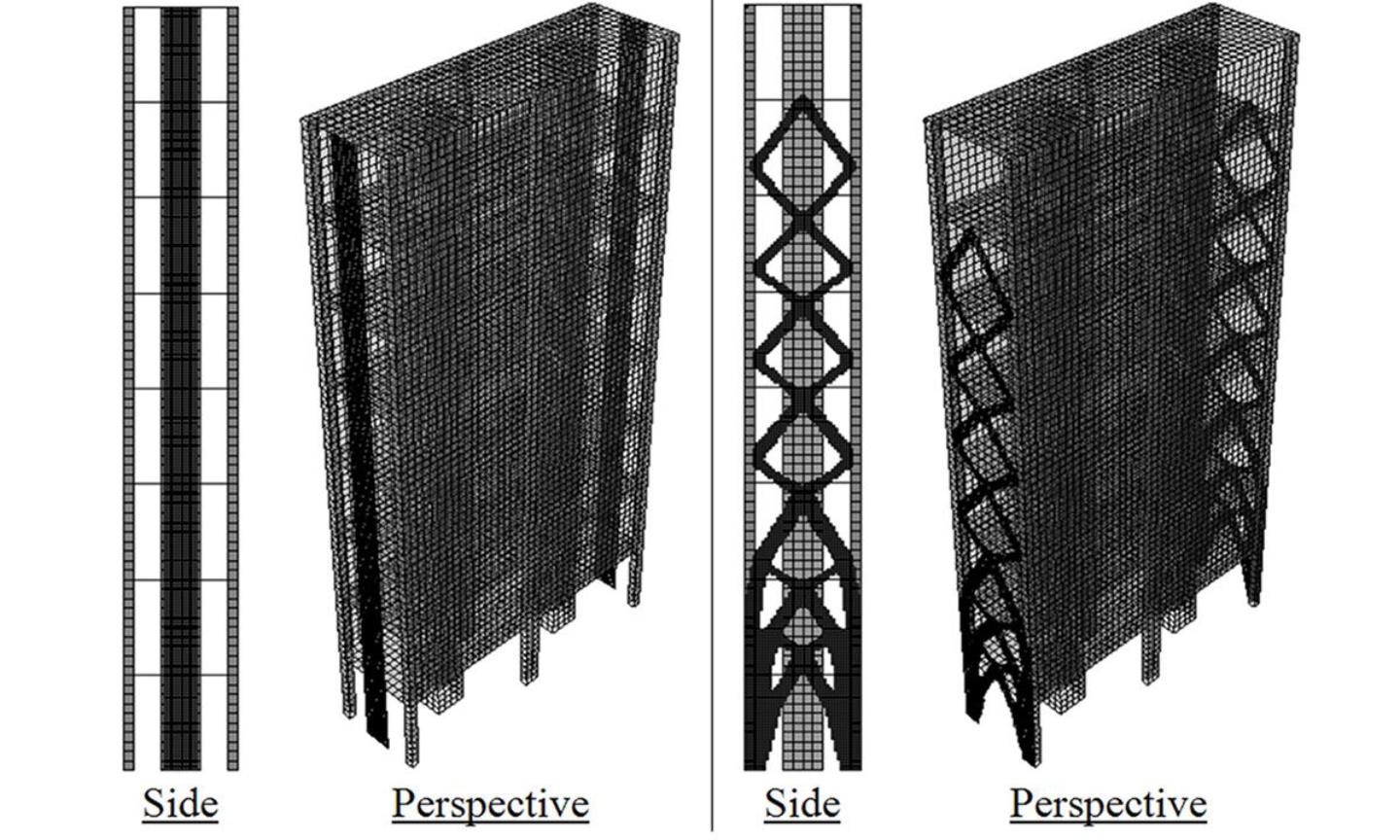Topology optimisation techniques can be used to determine the optimal material distribution of bracing systems for high-rise buildings, which are particularly sensitive to lateral loading forces.

The slenderness of a high-rise building makes the structure extremely sensitive to lateral loadings from wind and earthquake. Thus high-rise buildings need to be carefully designed in order that a stiff, stable and light-weight structural form is achieved. A bracing system is able to efficiently support the structure under complex loading conditions.
Example - Ikon Tower in Melbourne
The architect Kovac Malone proposed the "Ikon Tower", an 18 storey apartment tower in the Melbourne CBD. The building had an unusual slenderness ratio of 10. It was therefore critical to find a stiff structural form to minimise lateral movements.
Example - Design of a high-rise building considering multiple constraints (see picture above)
In real structural engineering design, various criteria need to be taken into account as design constraints, e.g. the material usage, deflection and frequency. Topology optimisation should address multiple constraints in order to adequately deal with practical engineering requirements. The figure below shows the BESO result of a stiffness design of a high-rise building which satisfies multiple constraints on the maximum allowable roof drift, fundamental frequency, and material volume.
Key people
- Professor Mike Xie
- Mr Peter Felicetti
- Dr Xiaoying Yang
- Dr Jiwu Tang
- Dr Zhihao Zuo
- Dr Xiaodong Huang
Publications
- Z.H. Zuo, Y.M. Xie and X. Huang, ’Evolutionary topology optimization of structures with multiple displacement and frequency constraints’, Advances in Structural Engineering, 15(2), pp 385-398, 2011.